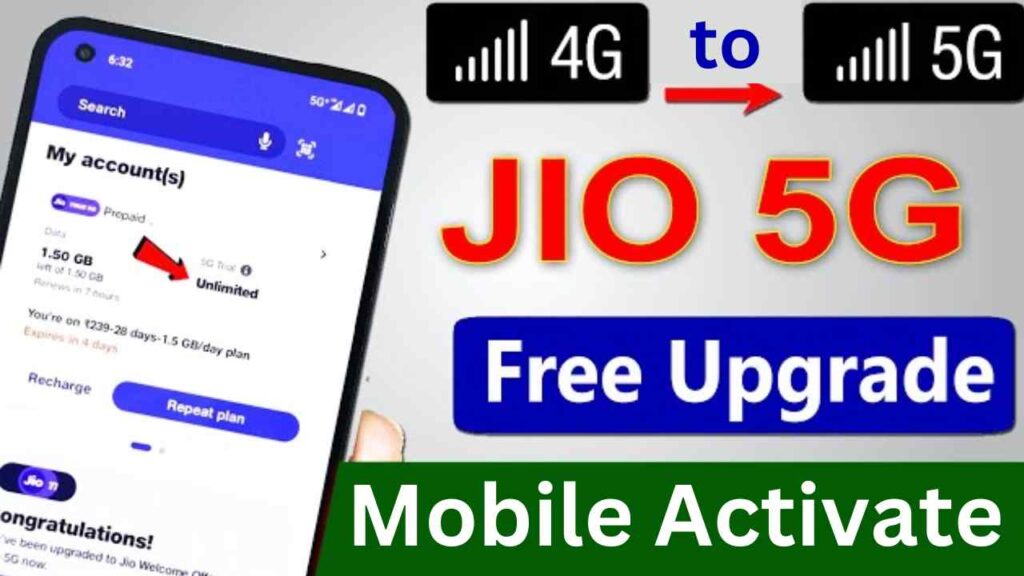To convert a 4G mobile device to use 5G networks, you essentially need a compatible 5G phone and a 5G SIM card from your service provider. While the process itself isn’t about converting the 4G hardware to 5G, it’s about upgrading to new hardware that supports 5G technology. Here is a detailed explanation of the process, ensuring that we cover all the necessary steps and considerations:

Understanding 4G and 5G Technology
1. Basics of 4G and 5G:
- 4G Technology:
4G, or fourth-generation technology, provides high-speed internet and data transfer, enabling advanced services like HD video streaming, online gaming, and more. It operates on frequencies such as 700 MHz, 1800 MHz, and 2600 MHz. - 5G Technology:
5G, or fifth-generation technology, offers significantly faster data speeds, lower latency, and greater capacity compared to 4G. It supports frequencies ranging from sub-1 GHz bands (like 600 MHz) to mmWave bands (like 24 GHz and above). 5G enables enhanced mobile broadband, massive IoT (Internet of Things) connectivity, and ultra-reliable low-latency communications.
Steps to Upgrade from 4G to 5G
2. Check 5G Availability:
- Network Coverage:
Ensure that 5G networks are available in your area. You can check with your service provider or use coverage maps available online. - Service Provider Compatibility:
Confirm that your mobile service provider offers 5G services and supports the upgrade process.
3. Upgrade Your Mobile Device:
- 5G-Compatible Phone:
You need a smartphone that supports 5G technology. Popular manufacturers like Apple, Samsung, OnePlus, and others offer 5G-enabled models. Check the specifications of the phone to ensure it supports the necessary 5G bands used by your carrier. - Purchasing a New Device:
If your current phone doesn’t support 5G, you will need to purchase a new 5G-compatible device. Look for features like the type of 5G (sub-6 GHz, mmWave) and ensure it matches your usage needs.
4. Obtain a 5G SIM Card:
- 5G SIM Card:
Ensure you have a 5G SIM card. Some carriers may require a new SIM card to access 5G services, while others might support 5G on existing 4G SIM cards. Check with your service provider. - SIM Card Replacement:
If necessary, visit your carrier’s store or request a SIM card replacement online. Follow their process to receive and activate the new SIM card.
5. Activate 5G Service:
- Plan Upgrade:
Ensure your mobile plan includes 5G service. Some carriers might require you to upgrade your plan to access 5G networks. - Activation Process:
Follow the carrier’s instructions to activate 5G service. This might include updating your mobile settings or contacting customer support.

4G To 5G Activate
Setting Up Your 5G Phone
6. Insert the SIM Card:
- Place the new or existing SIM card into your 5G-compatible phone. Ensure the phone is turned off while inserting the SIM card.
7. Configure Network Settings:
- Automatic Settings:
Most modern smartphones automatically configure network settings. After inserting the SIM card and turning on the phone, it should connect to the available 5G network if the service is active. - Manual Configuration:
If automatic configuration doesn’t work, you can manually set up the network:- Go to the “Settings” menu on your phone.
- Select “Network & Internet” or similar.
- Choose “Mobile Network” and ensure the “Preferred Network Type” is set to 5G.
8. Check for Software Updates:
- System Updates: Ensure your phone’s software is up-to-date. Manufacturers release updates that optimize 5G performance and compatibility.
- Go to “Settings” > “System” > “Software Update” and check for any available updates.
9. Testing the 5G Connection:
- Speed Test:
Use a speed test app (like Ookla Speedtest) to verify the connection. A 5G connection should show significantly higher speeds compared to 4G.
Potential Challenges and Troubleshooting
10. Common Issues:
- Network Coverage:
Even if 5G is available in your area, coverage might be limited indoors or in certain areas. Check the signal strength and try different locations. - Device Compatibility:
Ensure your phone supports the specific 5G bands used by your carrier. Some phones might support only certain types of 5G (e.g., sub-6 GHz but not mmWave). - Plan Restrictions:
Verify that your mobile plan includes 5G service. Some carriers might have specific plans for 5G or additional charges.
11. Troubleshooting Tips:
- Restart Your Phone:
Sometimes, a simple restart can resolve connectivity issues. - Reset Network Settings:
Go to “Settings” > “System” > “Reset” > “Reset Network Settings.” This can help resolve configuration issues. - Contact Customer Support:
If you continue to experience issues, contact your carrier’s customer support for assistance.
Benefits of Upgrading to 5G
12. Enhanced Performance:
- Faster Speeds:
5G offers significantly higher download and upload speeds, allowing for quicker data transfer and improved performance in applications like streaming, gaming, and video conferencing. - Lower Latency:
5G technology reduces latency, making real-time applications more responsive. This is crucial for gaming, augmented reality (AR), virtual reality (VR), and other interactive applications.
13. Increased Capacity:
- Network Efficiency:
5G can handle more devices simultaneously without degrading performance. This is beneficial in crowded areas like stadiums, concerts, and urban centers. - IoT Integration:
5G supports a massive number of connected devices, enabling the growth of IoT ecosystems in smart cities, healthcare, and industrial automation.
14. Future-Proofing:
- Advanced Technologies:
5G is designed to support future technological advancements, including autonomous vehicles, smart infrastructure, and more. Upgrading to 5G ensures you stay ahead in the technology curve.
15. Improved User Experience:
- Seamless Connectivity:
Enjoy uninterrupted and high-quality connectivity for all your digital activities. 5G enhances the overall user experience by providing reliable and consistent internet access.
Conclusion
Upgrading from a 4G to a 5G mobile device involves ensuring compatibility with 5G technology, obtaining the necessary hardware and SIM card, and activating the service through your carrier. By following these steps, you can take advantage of the enhanced speed, lower latency, and greater capacity offered by 5G networks. This transition is crucial for staying current with technological advancements and enjoying the benefits of next-generation mobile connectivity.
